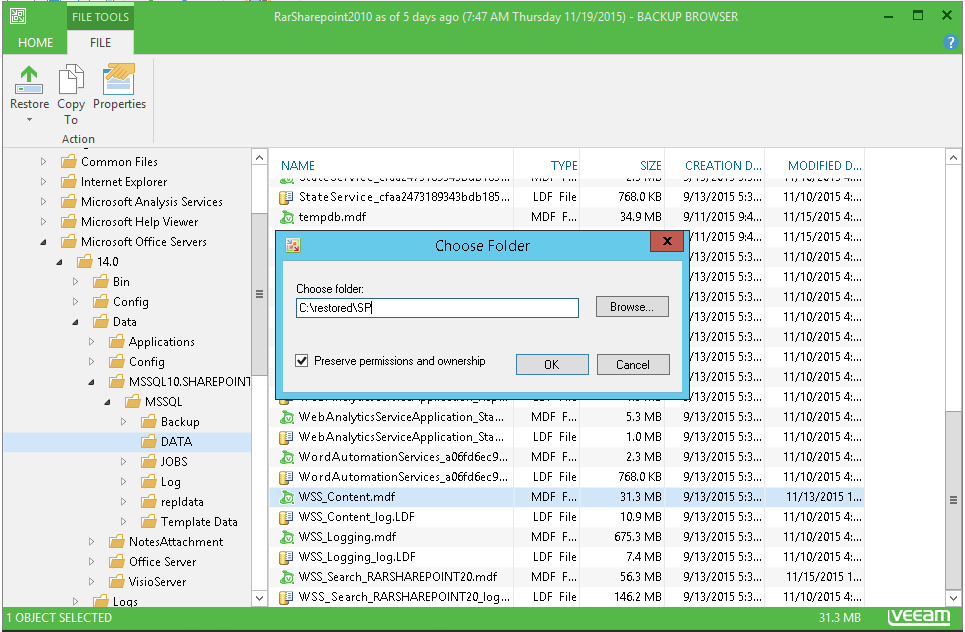Before you start restoring SharePoint items and libraries, you need to obtain a content database file (.mdf) from the VeeamZIP file or backup file.
VeeamZIP File
To obtain the content database from a VeeamZIP file, you can use full VM recovery or guest OS file-level recovery. However, the most convenient method is the guest OS file-level recovery option.
So, you have to do the following:
- Perform guest OS files restore for the virtualized Microsoft SharePoint server. See Veeam Backup & Replication documentation for details on performing guest OS file restore.
- On the Veeam Backup Browser toolbar, click Open in Explorer, then locate the Microsoft SharePoint content database files from which you want to restore data (see Locating Content Database File). Copy the path to clipboard and click SharePoint Items to start Veeam Explorer.
- Manually add selected database to Veeam Explorer scope, providing path to database file, as described in the Adding Database to Veeam Explorer Scope section.
|
If you choose to restore SharePoint items directly from the mounted VM file system, do not close Veeam Backup Browser until you finish restore operations. Closing Veeam Backup Browser automatically unmounts the file system of the backed up VM. |
If you need to keep SharePoint content databases hosted on the staging Microsoft SQL Server for a period of time that is longer than a File-Level Restore session, it is recommended that you copy the database files to a different location rather than restore them directly from the mounted VM file system.
To copy Microsoft SharePoint content database files:
- In the Backup Browser, open the File view.
- In the navigation tree, locate the folder where content database files reside.
- Select Microsoft SharePoint content database files (.mdf) and associated log files (.ldf).
- On the Backup Browser toolbar, click Copy To.

- In the Choose folder window, specify the location to which files will be copied and click OK.
- Open the folder to which files were copied and copy the full path to the target directory to clipboard. You can now launch Veeam Explorer and add the database file from backup that was copied.
For details, see Adding Database to Veeam Explorer Scope.
Recovery from Backup or Replica
Before adding content database files to Veeam Explorer for Microsoft SharePoint, it is necessary to extract them from the backup or replica file. To do this, you can use any data recovery feature available in Veeam Backup & Replication: Instant VM recovery, full VM restore, replica failover and so on. Data recovery options are described in detail in Veeam Backup & Replication User Guide. When you perform file-level restore, the VM image is not extracted from the backup. The content of a backup file is mounted directly to the Veeam backup server and displayed in the inbuilt Veeam Backup Browser. After the backup file is mounted to the Veeam backup server, you can either add the necessary SharePoint content database files to Veeam Explorer directly, or copy the files and then add them to Veeam Explorer scope.
In particular, Microsoft SharePoint Item Restore Wizard can be launched if you select Application Recovery option in the File-Level Restore Wizard. Another option is to use Guest OS Restore Wizard.
Related Topics









